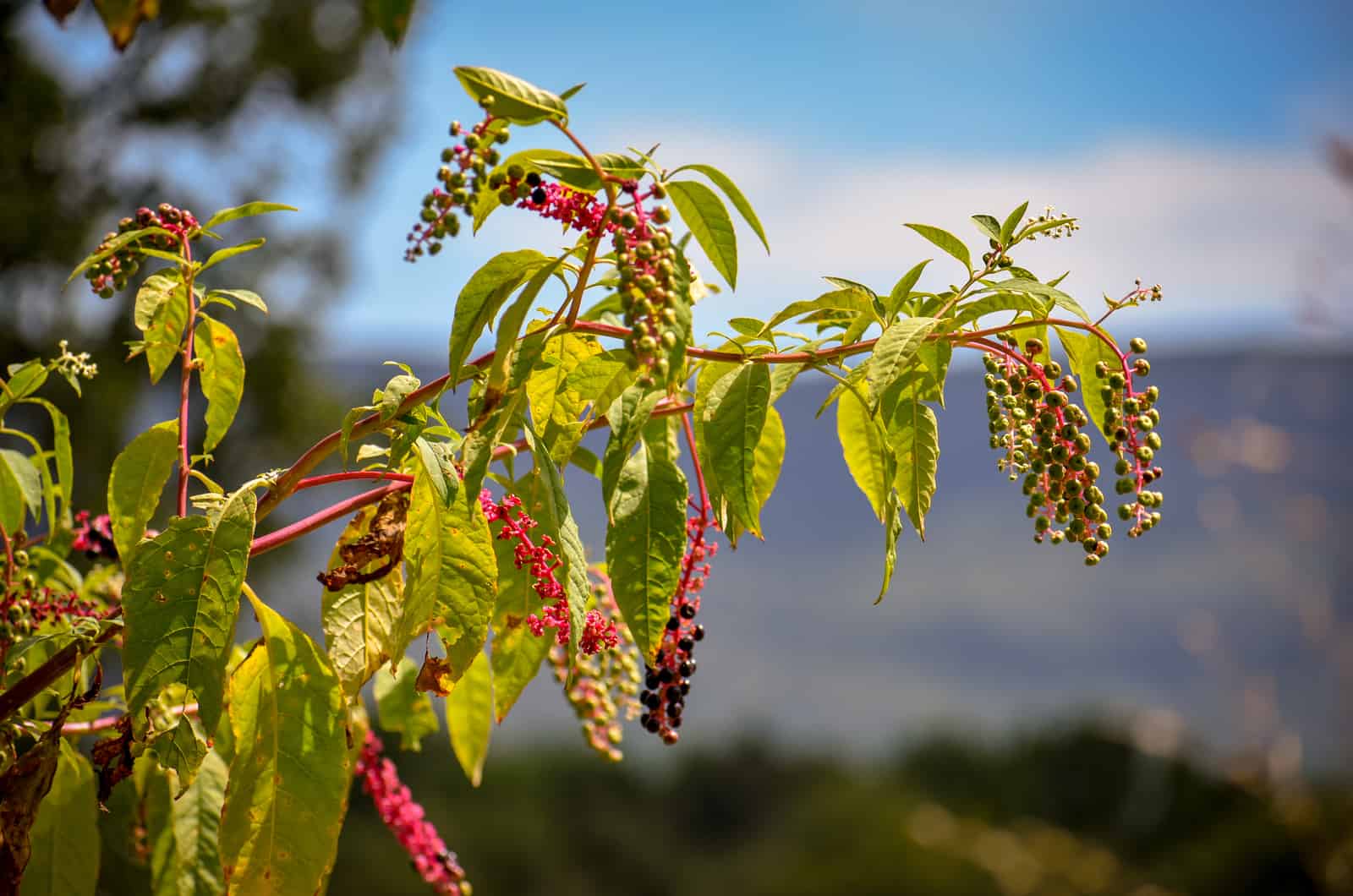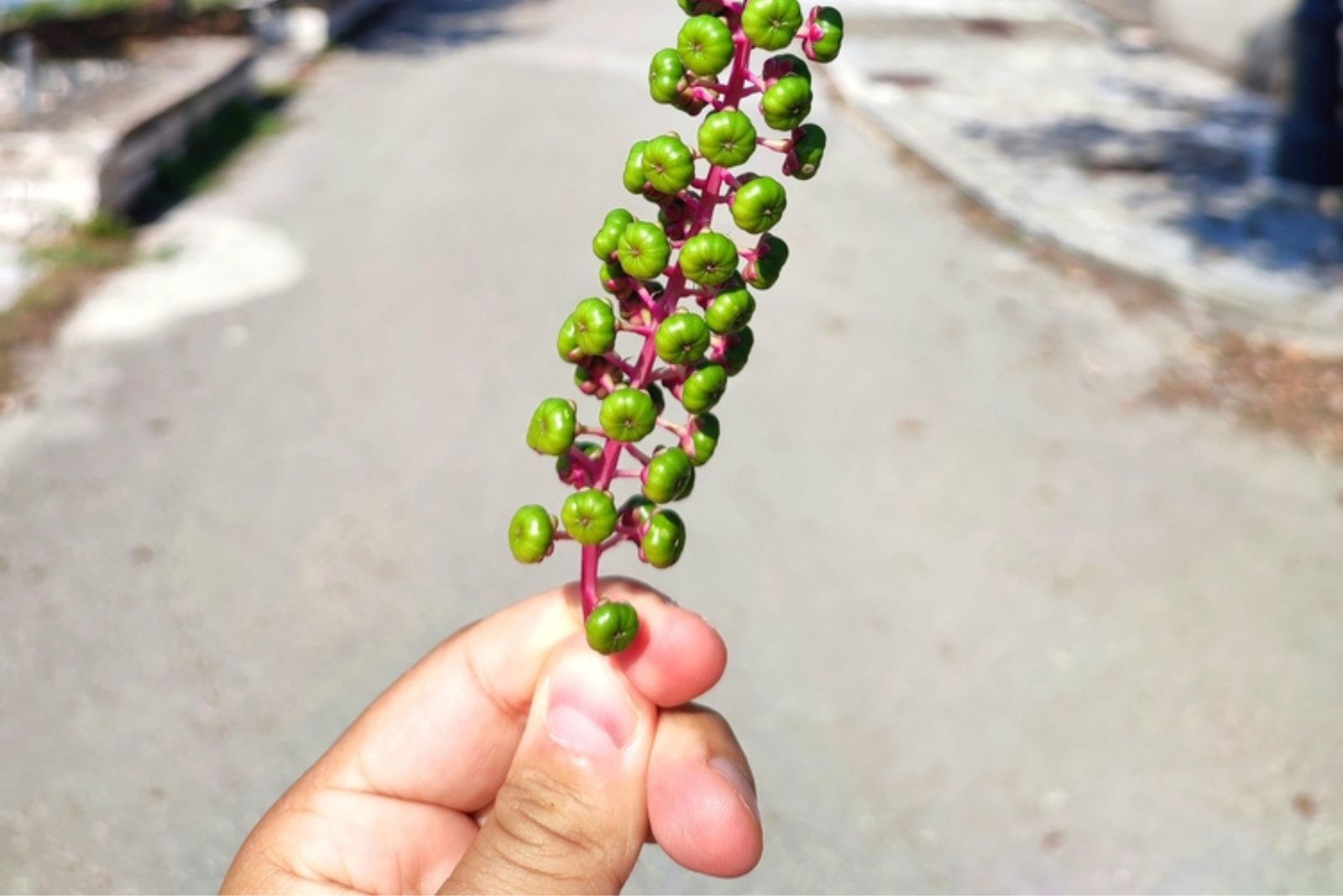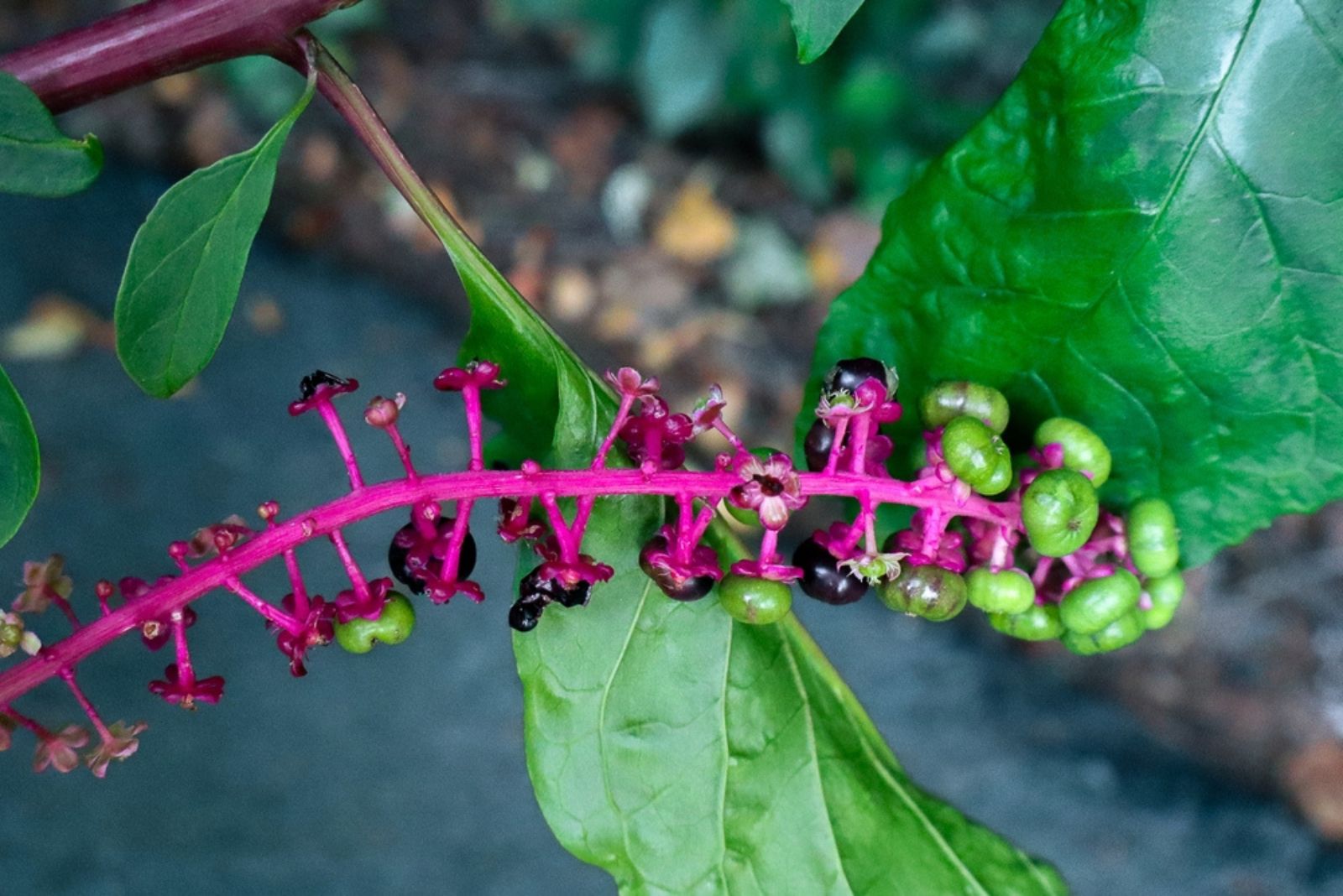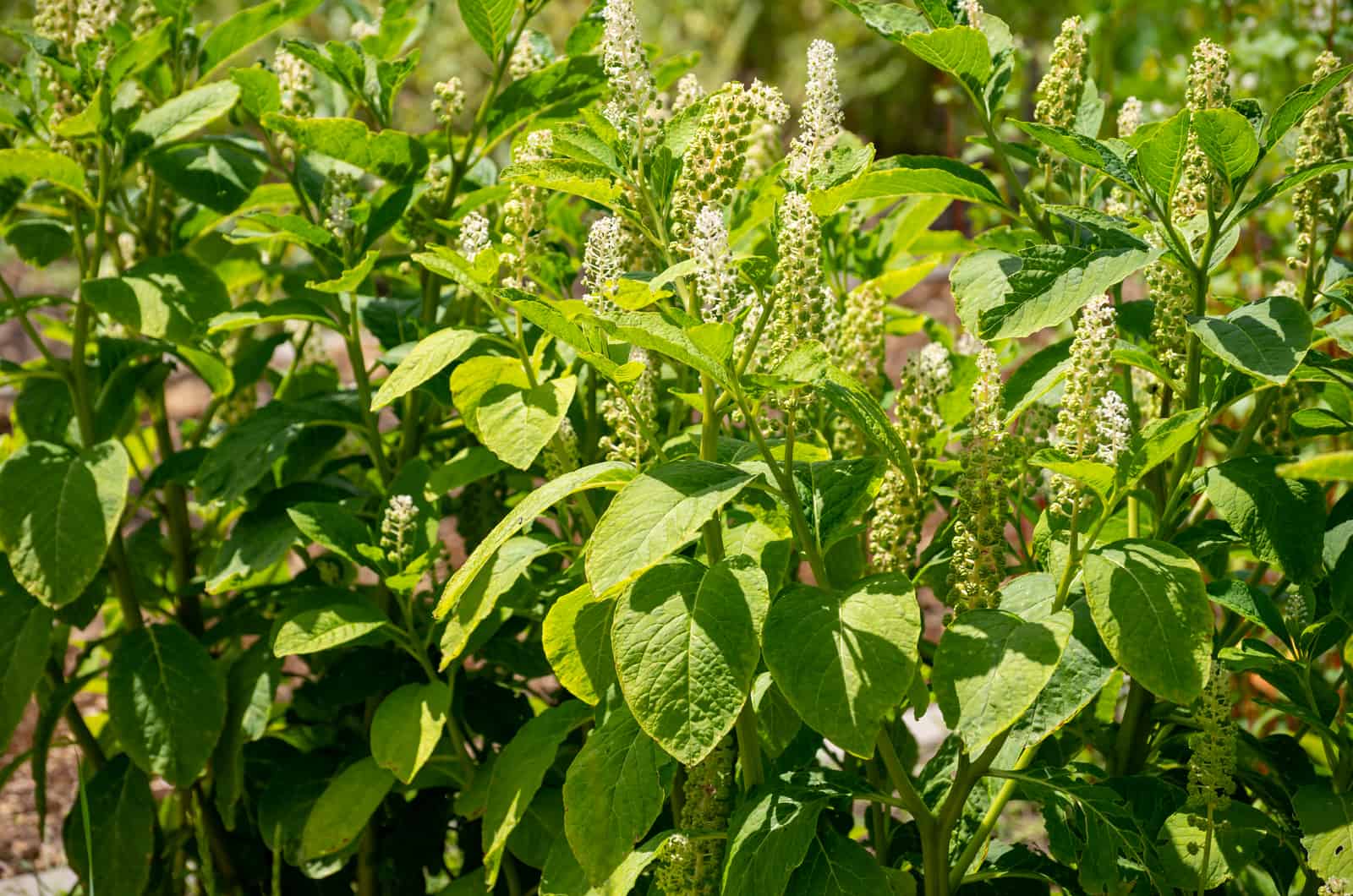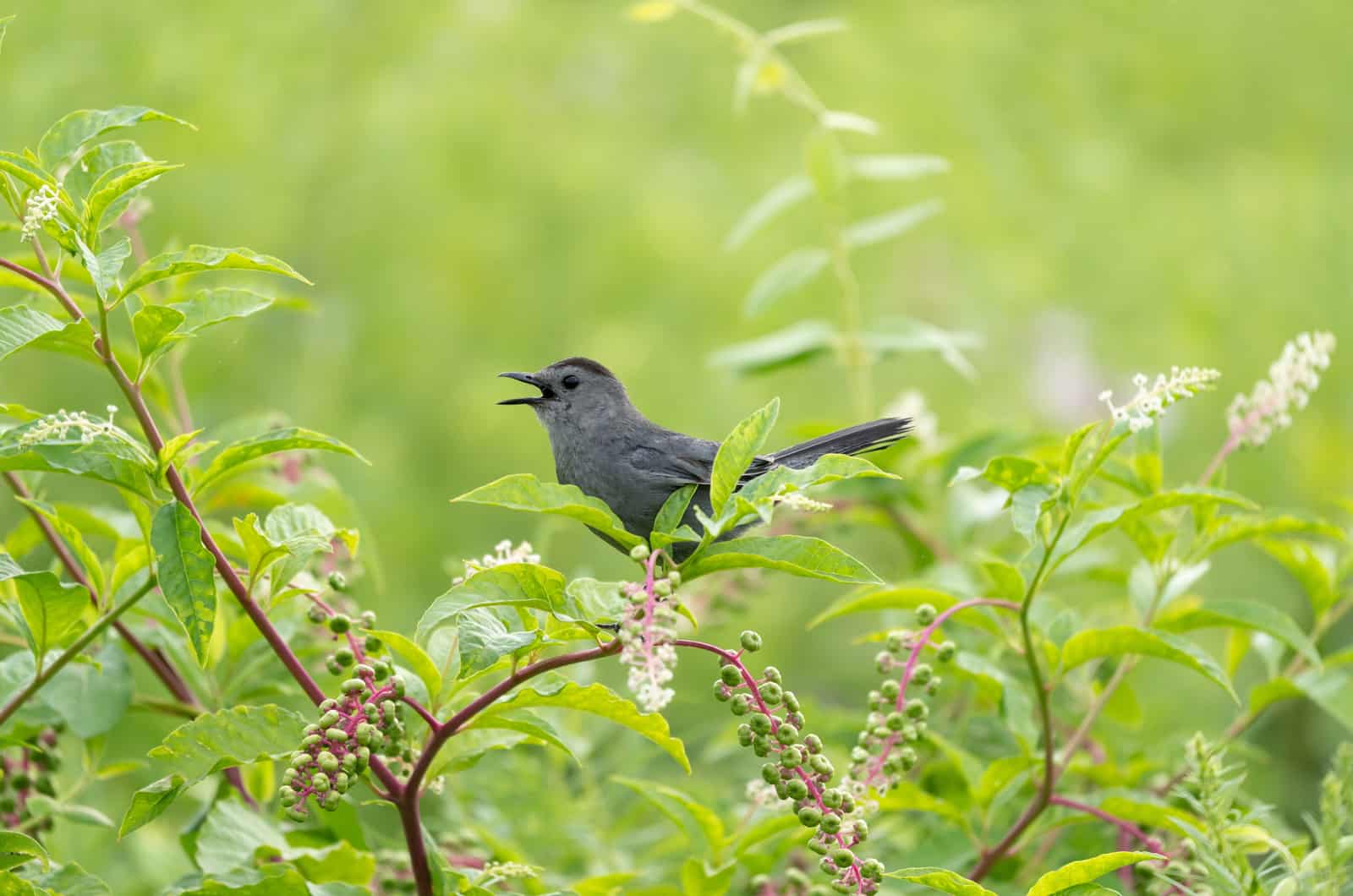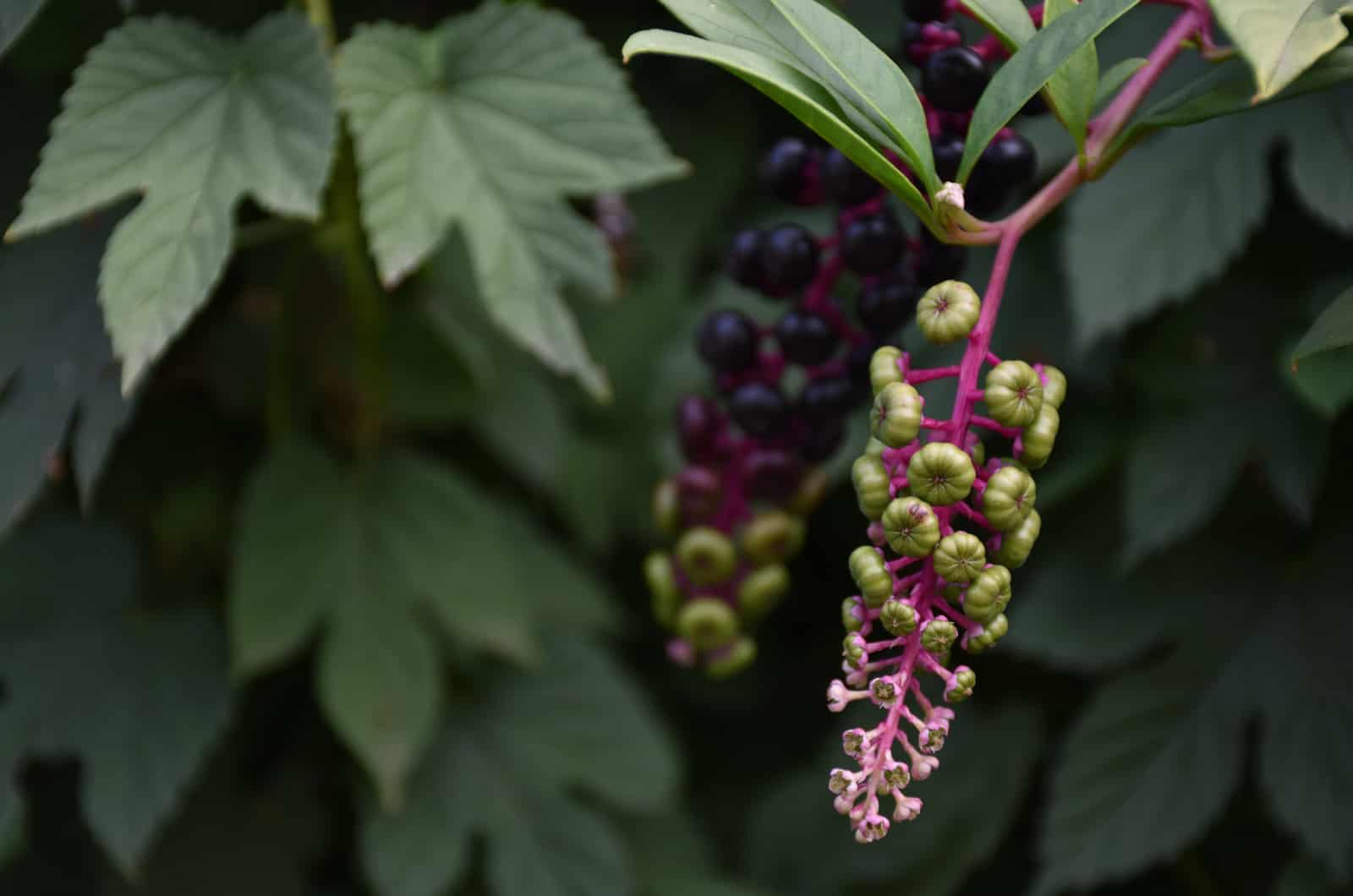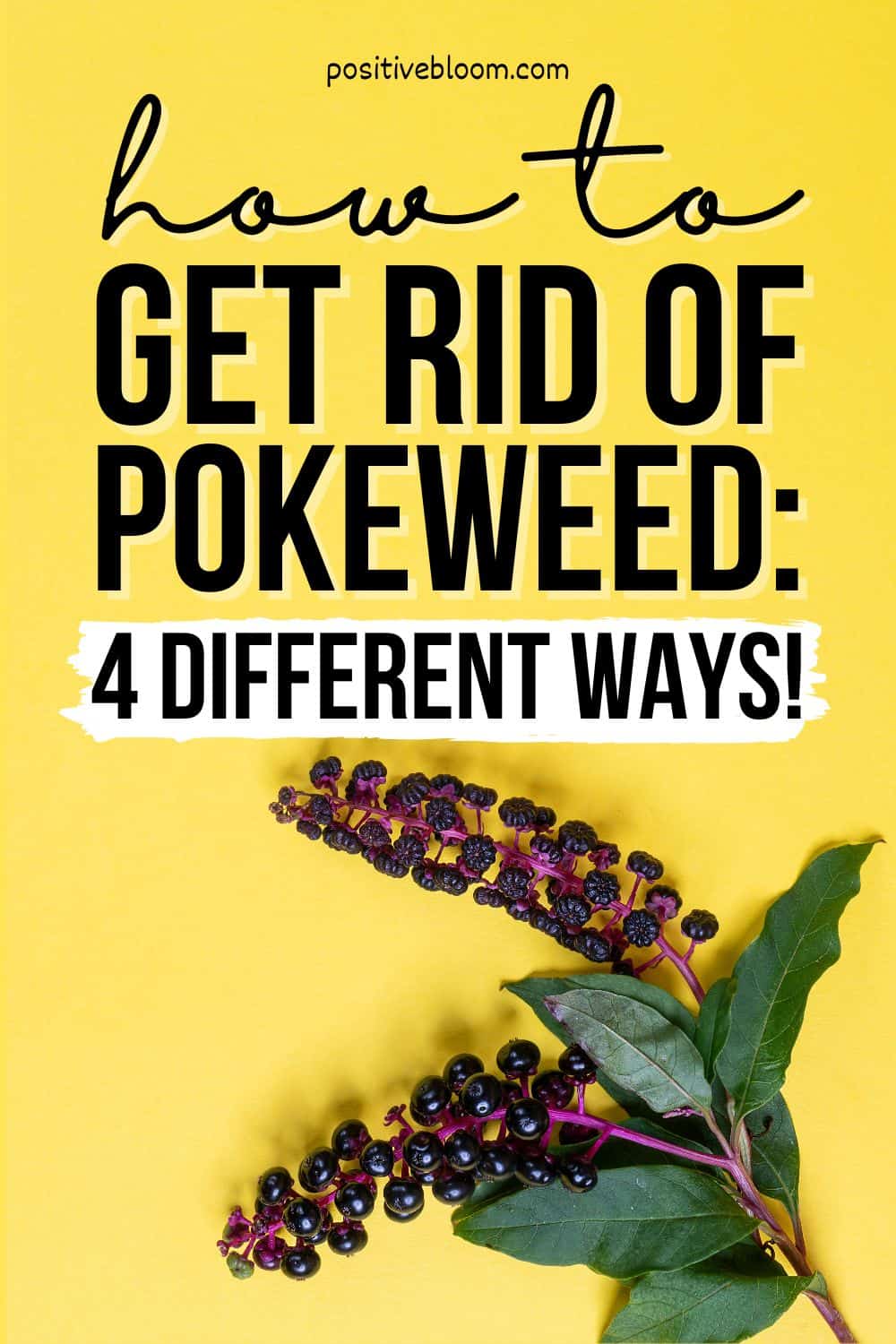Pokeweed police here! Do you have any pokeweed in your garden to report? If so, do you know how to get rid of pokeweed?
Well don’t worry, we’ve got you covered!
The Pokeweed plant is an invasive, toxic plant that can be found in every other garden (similar to moss growing on the tarmac). It can produce up to 50, 000 seeds per plant, and what is worse is that these seeds can stay viable for about 40 years! To make things even worse, these plants produce poke berries that are extremely toxic for humans and pets.
I can’t remember the number of times I’ve asked my mom to eat those delicious-looking berries, and she again told me not to touch them, and not to even think about eating them!
If you have spotted pokeweed in your garden, read on to find out how to get rid of it.
How To Get Rid Of Pokeweed: 4 Ways
There are different methods that you can use to get rid of pokeweeds, such as digging out the plant or using weed killers, or even cutting the plant repeatedly.
Read on for detailed destruction methods below, and get rid of any annoying pokeweed!
1. Use Your Hands
First, we are going to start off with the easiest method, and that is by using your hands; hence, you won’t be needing any special gardening equipment (other than a pair of gloves and goggles for eye protection).
If you were wondering why we need goggles, it’s because sometimes the pokeweed sap can burst and cause eye irritation. Gloves are a must since pokeweed is poisonous to touch.
The picking process is similar to picking carrots: you simply grab the plant by its base and pull it out straight. Once you see taproots and thin roots, you’ll know you have done it correctly.
This method works best in light soils; so if you have more compact clay soil, then this method might not be the best suited to you for the removal of pokeweed.
2. Dig Out The Pokeweed Plant
This is a manual removal method that is best suited to much larger plants that are growing in a more compact soil, thus they cannot be pulled straight out of the soil.
When digging out the plant, you will need some gardening tools, such as a garden rake, protective gloves, a garden cart or wheelbarrow, a garden fork, a soil screen, a garden hoe and a tarp sheet.
Follow the instructions below to successfully remove Pokeweed plant:
1. Remove the small shoots around the plant
You will have to remove the small, new shoots around the plant first, and this can be done by pulling them using your hands. Make sure not to leave any pieces of roots in the soil, to prevent regrowth and new plant development. If the soil is too compact for this, then I suggest you wait and do the removal after a rainfall, because the soil will soften up and make this whole process a lot easier.
2. Start digging
After you have removed the small shoots, you have to get to digging. Dig about 12 inches around the main plant and make sure to use a garden fork to avoid cutting off the roots. Dig deep, until you have reached the end of the taproot, then carefully pull the pokeweed roots out; make sure not to leave any part of the plant as it can quickly regrow into a new one.
3. Leave the pokeweed to dry out
Once you have successfully removed the plant from the soil, do not put it anywhere on the ground nearby, as it can spread seeds and grow, and you might have to repeat the whole process again. Place the plant on the tarp sheet and let it dry out. Once it has completely dried out, you can put it in a compost bin or in a garbage bag to simply throw it out.
4. Loosen the soil
The next step is loosening the soil using a rototiller around the plant because sometimes the roots can grow deeper in the soil, and you might have missed some when digging out the plant. So if you want to prevent regrowth, you will have to remove the deepest roots and shoots.
5. Remove seeds and berries from the soil
This is an essential step for the successful removal of a pokeweed plant, and it is done by placing a soil screen over the garden cart or wheelbarrow, and spreading the soil that will pass through the soil screen, while pieces of roots and berries won’t pass through and will remain on the top of the soil screen.
6. Rake the soil
At last, you should rake the soil to get it smooth and ready for grass plantation, or any other plant.
7. Check if the pokeweed has appeared again
I would suggest you check for regrowth every 2 weeks: if you notice any small shoots, pull them out immediately. You can also apply weed killers and herbicides, check below for how to kill pokeweed and what the best pokeweed killers are.
3. Cutting Down The Pokeweed Plant
Though this would not be my first option, some gardeners choose to cut down the plant and wait for its regrowth, just to cut it down again.
This method requires constant cutting and checking to see if the pokeweed has grown back. However, the taproots will eventually run out of energy and stop growing.
You will need appropriate clothing to avoid skin contact with berries, and gardening shears to cut the plant.
First, you will need to pick all the berries and put them in a garbage bag, because this way you can prevent the berries from spreading on the ground whilst cutting (berries contain the seeds through which the plant reproduces). Then, you will need to use gardening shears and cut to the base of the plant, or you can simply go over them with the lawnmower.
You will have to repeat this process until the plant stops growing.
4. Applying Weed Killers
Sometimes you just don’t have time to get the job done, and the soil may be too compact to do it by hand; in this case, the easiest option to get rid of the pokeweed plant is to apply weed killers.
There are a few methods of weed killer application regarding the plant developmental stage: if the plant is young, then weed killers might do their job and completely eradicate the plant, however, there might be some issues with larger plants that have more established roots.
If you want to try your luck and apply weed killers to an already established pokeweed plant, please bear in mind that a single application might not be sufficient, and that the job should be done in the late summer when the plant starts storing carbohydrates for the winter.
Weed killers are often applied to prevent regrowth after the plant has been effectively dogged out. When applying weed killers, make sure to wear protective equipment because some herbicides might be carcinogenic and can cause health problems.
You can use a glyphosate herbicide, like Roundup Max Control, mix it with at least two gallons of water. This should be applied to the leaves of the plant, and after 10 days your pokeweed plant should be ready for a waste bin.
Another option is to apply distilled vinegar, which contains natural acid that is able to completely burn the roots and prevent growth. DIY your own vinegar solution by mixing 50% vinegar and 50% water, put it in a sprayer and spray it on the plant everyday.
However, if you choose to go with the herbicides option to kill common pokeweed, make sure to follow the instructions that are usually displayed on the bottle or the box.
More About The Pokeweed Plant
The Pokeweed plant, also known as the Phytolacca americana, is a herbaceous native plant that you can find almost anywhere in the US! It can grow in different types of soil and it is very invasive, mainly because about 50, 000 seeds can be produced per plant!
These seeds are usually distributed when falling off the plant and spreading, or by birds that tend to munch on these seeds; either way, there are a lot of these plants and maybe they wouldn’t pose any issues if they weren’t toxic.
I am sure that you have seen pokeweed berries and thought about eating one of them, mainly because they look much like blueberries; nonetheless, they are toxic and should not be ingested.
Asides from the berries, a Pokeweed plant also produces long, oval leaves that are attached to red stems — these warm colors make it look truly beautiful, however, this plant has never been on anyone’s wish list.
It grows in USDA hardiness zones from 2 to 11, which is why we say that it is widely distributed. Other names for this plant are: Cancer Root, American Nightshade, Pigeon Berry, Inkberry Coakun, Pookan Bush, and Pokeroot.
Pokeweed Plant Toxicity
Do you wonder why the Pokeweed plant is so toxic, or if it can cause any health issues if ingested or even touched with bare skin?
This plant contains chemical compounds called saponins and oxalate, which are highly concentrated in the roots of the plant (which is why they are the most toxic part), while being slightly less concentrated in the rest of the plant.
This is a common feature of many invasive plants, as they can defend themselves and grow anywhere without being constantly eaten by animals. Fortunately, these are not deadly for living stock, they are simply unsettling, which is why animals tend to avoid it.
On the contrary, they can pose serious issues to humans in the case of ingestion of large amounts of berries. After eating pokeweed berries, your mouth will start burning, and this is followed by vomiting or diarrhea; if large amounts of berries have been ingested, the additional symptoms might be respiratory failure and convulsions, and eventually death.
Some folks tend to use these berries in cooking and to make pies, however, there have been several cases of poisoning reported due to improper cooking. You should avoid it at all costs.
Even when touching the berries with bare hands, it might cause rashes similar to poison ivy: your skin might start itching, and get irritated, which is why we always say to wear gloves and proper clothing when you want to remove the pokeweed plant.
Pokeweed Identification
It is important to be able to identify the pokeweed plant and make sure that you got rid of the right plant that can be extremely harmful if ingested.
Imagine a scenario where pokeweed starts growing next to a blueberry plant or grapes, it would be so hard to detect which is which. To successfully identify the pokeweed plants, first you should look at the leaves. The leaves have a dark green color on the surface, with a pinkish color underneath the leaves; they grow from 5 to 10 inches long, and they have an oval shape with a somewhat smooth texture.
This plant tends to produce white-green flowers before developing into the actual fruits, that is, before developing into the pokeberries.
Asides from this, you can investigate the plant’s size: a pokeweed plant tends to grow up to 10 feet tall, and it looks similar to a small tree or a bush. They also have prominently red stems that can be used for its identification.
Though you might not see the roots, after you have dogged out the plant you can easily identify the pokeweed plant because it has a very long, white taproot that appears to have a fleshy texture.
And lastly, you can look at the pokeweed berries that grow in a similar manner to grapes. They grow in clusters, hanging from the red stem, which is a main characteristic of a pokeweed plant.
Frequently Asked Questions
1. How do you get rid of pokeweed naturally?
If you don’t want to use a herbicide, you can use distilled vinegar and spray it all over the pokeweed plant. Bear in mind that this is going to get rid of the parts that are above the ground, while its roots are going to stay viable. If you want to get rid of the roots as well, I would suggest you thoroughly pour vinegar into the soil.
Another way you can get rid of pokeweed is to simply pull it out of the ground by using your hands (if the soil is not too compact), or you can dig out the entire plant with the roots still attached to the plant. Make sure not to leave any traces of the plants, as well as any berries and seeds, because the plant can simply start growing again from these.
Some folks also tend to cut the plant consistently until its roots run out of energy and stop growing.
2. Can touching pokeweed kill you?
No, touching pokeweed can not kill you; though it might cause rashes similar to poison ivy if you were touching it with your bare skin. This might cause some redness and itching, but it passes quickly.
3. What can you use to kill pokeweed?
The best option among weed killers is glyphosate herbicide, which is applied to the leaves of the plant. Harmful chemicals will travel through the plant to the roots and completely destroy the plant. You can find Roundup Max Control on Amazon, or you can go and buy it in a garden shop nearby.
If you don’t want to expose yourself to any carcinogenic chemicals, you can also apply distilled vinegar to the leaves and in the soil — the acid from vinegar will dry out the roots.
4. Can you use pokeweed as a compost?
In a way you can use pokeweed as a compost. For instance, you can use parts of pokeweed plants in a cold compost pile and they will break down to provide certain nutrients for soil. Some gardeners say that you can use the seeds and berries as well, you just have to make sure that they are completely dried before; whilst others say that you can only use the shoots for compost.
Both ways pose issues when composting in a hot compost pile, as the temperatures are just high enough for the seeds to start germinating.
Therefore, I would not recommend that you use pokeweed as a compost, you can just dry it on the tarp and throw it in the trash.
Conclusion
Pokeweed is a dangerous plant that should be removed from the garden immediately, especially if you have a big family with kids and pets.
We have provided you with 4 different ways of how to get rid of pokeweed, and they include doing it by hand, digging out and cutting the plant repeatedly, as well as applying different weed killers to prevent weed growth.
Even though a pokeweed plant has beautiful dark green leaves with pink undersides, growing on red stems, and producing adorable little pokeberries; it should be removed as soon as possible, and with great care as it may cause rashes if it comes into contact with bare skin.
When removing the plant, make sure that you get rid of every bit of the plant because it can start growing yet again, and the work that you have done previously might be for nothing.
Until next time!
Like this post? Share or pin it for later!


